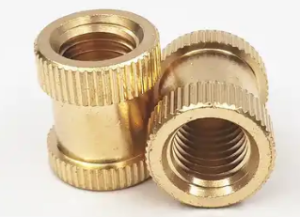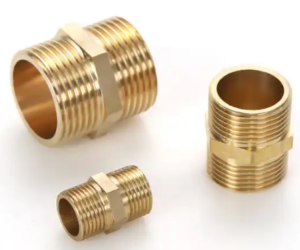Difference Between Tapping and Threading in CNC Machining
CNC (Computer Numerical Control) machining has completely changed the way manufacturers produce parts. The precision and efficiency of CNC machining make it an indispensable technology for producing complex shapes and threads required for assembling components. Among the numerous processes in CNC machining, tapping and threading have a significant impact on the overall quality and functionality of the parts. This article delves into the differences between tapping and threading in CNC machining, discussing their definitions, processes, applications, tools involved, as well as their advantages and disadvantages.

Understand tapping and thread machining
It is crucial to understand the meaning of tapping and threading before delving into the differences.
tapping
Tapping is a machining process that refers to machining internal threads within pre drilled holes. It is achieved through the use of a tool called a tap, which is a cutting tool specifically designed to create threads inside a hole. When it is necessary to insert bolts or screws into workpieces, tapping technology is usually used to achieve safe mechanical connections.
The tapping process is often carried out using CNC machine tools, as they provide higher precision and repeatability. In CNC machine tools, the tapping cycle is programmed, allowing the machine tool to automatically perform operations with minimal human intervention.

Threading
On the other hand, threading refers to the process of making external threads on a workpiece. This can be done on the outer surface of the cylinder or any other object that requires threading, to facilitate assembly with mating components such as nuts and bolts. Thread machining can also be carried out through various methods, including turning, milling, or grinding.
When threading on a CNC lathe, threading refers to the precise movement of the lathe tool in a pattern corresponding to the required pitch and profile. This allows manufacturers to produce threads that meet specific industry standards and tolerances.

The main difference between tapping and threading machining
Although tapping and threading are closely related and play similar roles in threading, they are fundamentally different processes. The following are the main differences between tapping and threading in CNC machining:
1. Purpose
Tapping: The main purpose of tapping is to form internal threads for inserting fasteners such as screws and bolts. Tapping is crucial for applications that require establishing safe threaded connections within pre drilled holes.
Thread machining: The main purpose of thread machining is to form external threads, such as the outer surface of rods, pipes, or other components that need to be connected to nuts or other threaded parts.
2. Types of threads produced
Tapping: Tapping produces internal threads, which means the threads are located inside the hole. The shape and contour of these internal threads must comply with various standards, depending on their intended use.
Thread machining: Thread machining can produce external threads located on the outside of the workpiece, as well as internal threads when the workpiece is hollow. It can also produce various thread forms and styles according to the processing method used.
3. Tools Used
Tapping: The tool used for tapping is called a tap. Taps come in different designs, including tapered, straight, and bottoming taps. Each design serves a specific purpose and is chosen based on the type of thread and the depth of the hole.

Threading: Tooling for threading can vary widely based on the threading method used. In CNC turning, threading tools such as single-point cutting tools or multi-point tools (like threading inserts) are employed. For threading operations on a milling machine, helical milling cutters may be used.

4. Processing technology
Tapping: The tapping process involves rotational motion, as the tap is rotated into the pre drilled hole while being pushed downwards. According to the design, the tap can cut threads when entering the material, or make threads by replacing the material.
Threading: Threading usually involves linear motion and rotation. In the case of a CNC lathe, the workpiece rotates while the tool moves linearly to create external threads. According to the settings, the comparison between speed and feed rate will greatly affect the results of thread machining.
5. Speed and efficiency
Tapping: Due to the nature of cutting internal threads, tapping may be a slower process. In the tapping process, in order to obtain a smoother surface, higher rotational speeds are usually used, but this usually means slower feed rates.
Thread machining: The efficiency of thread machining may be higher than tapping, especially in CNC applications where thread machining can be performed continuously at the optimal feed rate, thereby reducing cycle time.
6. Complexity and skill level
Tapping: Tapping operations can range from simple to complex, depending on the depth and type of thread. Manual tapping requires high skills, while CNC automation simplifies this process.
Thread machining: Thread machining requires a higher level of complexity and knowledge, especially when multiple thread types and forms must be produced. Mastering CNC thread machining operations requires a deep understanding of tool paths, speeds, and feed rates.
7. Surface smoothness and tolerances
Tapping: The surface finish of tapping may not always be so smooth, especially when using uncoated taps. The internal thread may not be very obvious, but the tolerance must still be followed in order to correctly install the fastener.
Thread machining: Due to the variety of available tools and speeds, thread machining can better control surface smoothness. Good thread machining practices can lead to high-quality surfaces with better critical tolerances.
Application of Tapping and Thread Machining
Tapping and threading have unique applications in different industries, and understanding these applications can help illustrate their importance.
Application of tapping
1. Assembly: Tapping is crucial for creating internal threads in parts that require the insertion of fasteners. This is common in machine frames, automotive parts, and casings.
2. Holes in castings: Many castings require threaded holes as attachments or fixtures. Knocking can ensure that these components are firmly fixed together.
3. Maintenance and repair: Tapping is commonly used in maintenance scenarios where threads may peel off, requiring new internal threads to accommodate new fasteners.
4. Aerospace: In the aerospace industry, tapping is used for critical applications where high-strength materials must be combined with numerous components to ensure safety and reliability.
Applications of Threading
1. Fasteners: The primary application of threading is the production of external threads for screws, bolts, nuts, and other fasteners, a critical aspect of mechanical assembly.
2. Piping and Tubing: Threading is crucial in the plumbing and fluid transport industries where threaded pipes connect securely and allow for effective fluid flow.
3. Mechanical Components: Various mechanical components, like gears or connectors that interact with additional assemblies, often require precise external threads.
4. Manufacturing Jigs and Fixtures: Threading forms a core part of the design of jigs and fixtures that hold workpieces in place during machining, ensuring that parts remain secured without misalignment.
Advantages and Disadvantages of Tapping and Threading
Tapping
Advantages
Internal Fitment: Tapping ensures that fasteners can be inserted into concealed or tight areas that are difficult to reach.
-Automated Process: CNC machines can automate the tapping process, providing consistency and reducing the risk of human error.
-Versatility: Tapping can be used with various materials, including metals, plastics, and composites.
Disadvantages
– Material Waste: Tapping can result in material removal, leading to waste, especially if not designed properly.
– Tool Wear: Taps can wear down more quickly than other tools due to the material being displaced, necessitating regular replacements.
– Complexity in Depth: Achieving the correct tap depth can be challenging, especially in cases of blind holes.

Threading
Advantages
– External Connections: Threading provides robust external connections, essential for joining parts in mechanical assemblies.
– Customization: The threading process allows for customization of thread profiles, pitches, and sizes based on specific requirements.
– Efficiency in Production: CNC threading setups can yield high productivity rates for large production runs.
Disadvantages
– Setup Complexity: Setting up CNC machines for threading operations can be more complex compared to tapping, requiring careful programming.
– Inconsistencies: Poor setups can result in inconsistencies in the thread quality, leading to issues in assembly or performance.
– Higher Tool Costs: The cost of threading tools can add up, particularly when specialized tools are required for unique thread designs.

Conclusion
In conclusion, tapping and threading are both vital processes in CNC machining, each serving specific purposes and applications while contributing to the overall quality and functionality of manufactured parts. Understanding the key differences between them can help manufacturers make informed decisions about which process to use based on their requirements.
While tapping is primarily concerned with internal thread creation and provides the capability for inserting fasteners into concealed spaces, threading focuses on producing external threads for mechanical assembly. Both processes have distinct tooling, machined movements, and nuances in terms of applications and advantages, underscoring the importance of these methods in the broader context of CNC machining.
As industries continue to evolve and demand higher precision and efficiency in manufacturing processes, both tapping and threading will remain critical to the success of CNC machining, ensuring the creation of reliable and high-quality mechanical components. Understanding the intricacies of these processes will empower engineers and manufacturers to achieve optimal results in their production efforts, ultimately driving innovation and excellence within the manufacturing sector.

Leave a Reply
Want to join the discussion?Feel free to contribute!